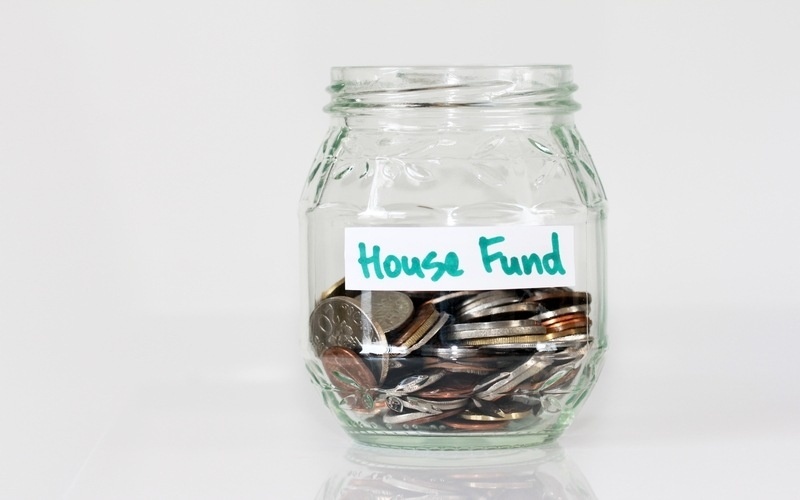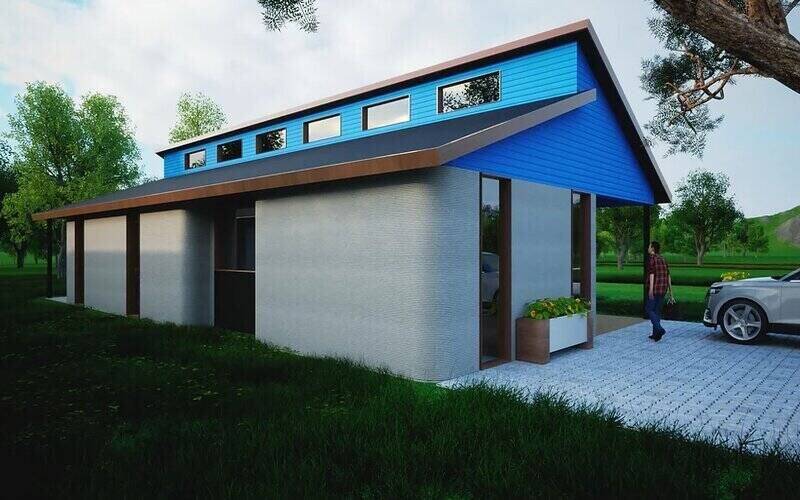While the effectiveness of Australia’s current support for first home buyers is up for debate, that doesn’t change the fact there’s a lot of it. Arguably, there’s so many different schemes and grants available that they’re causing confusion among Aussie first time buyers, with a third of them unaware of any initiatives on offer.
One support scheme that’s received little attention from anyone, be it the government, the media, or even buyers themselves is the First Home Super Saver Scheme. But that has changed in recent weeks, with the Treasurer announcing an amendment to it for the first time since it was created several years ago.
What is the First Home Super Saver Scheme?
The first home super saver scheme (FHSSS) was introduced by the Federal Government back in 2017 by Scott Morrison when he was Treasurer. Simply put, the scheme allows Australians who have not yet owned property to voluntarily contribute up to $15,000 per year ($30,000 for couples) into their superannuation which can later be withdrawn for use as part of a home deposit.
These contributions could be either concessional (taxed at a discounted rate of 15%) or non-concessional (taxed at the individual’s marginal rate). Compulsory super contributions - that is, the 9.5% (soon to be 10%) super guarantee that employers are forced to contribute to an employee’s super - cannot be withdrawn under the scheme.
That 15% tax rate on contributions is considered to be the scheme’s big selling point, as superannuation is taxed at a much lower rate than most people’s income.
From its inception, the maximum any one person could contribute to the FHSSS overall was $30,000. But that has now been changed…
How has the scheme been changed?
Superannuation was a major focus of the 2021-22 Federal Budget, as was housing, and the FHSSS was one of the things to be changed. The proposed change is fairly simple: The maximum contribution limit per person is to be increased to $50,000 from $30,000 from July 2022, meaning a couple buying their first home could withdraw as much as $100,000 of voluntary contributions from their super at a low rate of tax.
The yearly contribution limit however is still $15,000. But based on a maximum contribution of $50,000, one person could boost their housing deposit by thousands of dollars (mostly in tax savings) compared to simply stashing the funds in a savings account. For those who want to use some of their super towards a house deposit, this scheme is currently the only option available, but it only applies to voluntary contributions.
See also: Should you pay off a mortgage with super before you retire?
Is the scheme popular with first home buyers?
The short answer to this is no, the scheme is not particularly popular with first home buyers. Data obtained from the Australian Taxation Office (ATO) by Savings.com.au shows that from the period of July 2018 to 31 March 2021, the ATO received 21,914 First Home Super Saver (FHSS) scheme release requests from individuals totalling over $296 million.
For the same period, 1 July 2018 to 31 March 2021, first home super saver scheme amounts were paid to 18,492 individuals totalling around $247 million.”
So, less than 18,500 people have used the FHSSS since it began, which is just more than 6,000 per year. To put that into perspective, ABS data tells us there are around 10-15 thousand home loans granted to first home buyers each month.
So the FHSSS isn’t exactly what you’d call popular. It also fits with some of the responses to the scheme when it was first announced in the 2017-18 budget, such as that of UNSW Professor of Economics Richard Holden, who said:
“This will cost the government A$250 million over four years and do absolutely nothing to help first homeowners…all that happens is that this subsidy goes into the price of existing housing. Sellers benefit, buyers get no joy.
“It’s bad economics, somewhat costly, and a cruel hoax on prospective homebuyers who are struggling with an out-of-control housing market.”
Arguably the scheme hasn’t been all bad, and there are clearly still some who have used it. But not as many as the government might have hoped. Before the 2019 election, the Labor Opposition actually promised to scrap the scheme if it won.
With these recent changes, is it now worth using?
Whether the first home super saver scheme will become more popular with first home buyers will remain to be seen, and there are some who say it will, while others say it won’t. Rainmaker Information director of Research Alex Dunnin wrote in Money Magazine earlier this month that the scheme “has no point” and that the changes are “just for show”.
“The FHSS scheme is poorly understood because it is so inconsequential,” Mr Dunnin said.
“Yes, it's a brilliant idea to enable Australians to use the administrative infrastructure of their superannuation fund to help them save for their first home.
“But with interest rates at 6,000-year lows and - based on comments from the Reserve Bank of Australia - likely to stay that way, and home prices exploding through the stratosphere so rapidly, the FHSS scheme has no point.”
On the other hand, Director of First Home Buyers Group Dane Disney says more first home buyers have taken notice of it, and his property group was now actively advertising it to potential customers.
“We at First Home Buyers Group have seen an increase in enquiries for the Super Saver Scheme since it (the change) was announced, but that’s largely been from the confusion of customers thinking they could take out super contributions to use for their deposit, but in fact, they had to have made voluntary contributions with tax savings to be able to now withdraw that under the super saver scheme,” Mr Disney told Savings.com.au.
“It certainly is worth saving up for your deposit through your super under the Super Saver Scheme. First Home Buyers can save up to 30% tax by doing this, which is extra money they could be putting towards their deposit.
“There are some complications involved in setting this up and accessing it that we help our customers with, but it is certainly worth it."
Director of First Time Home Buyers Group Dane Disney, right (picture supplied).
According to Mr Disney, anyone earning over $18,200 per year can save on tax while using the FHSSS.
“It's also a forced saving because once your contribution is in your super you cant withdraw or use it until you apply for it when you are ready to buy a home,” he said.
"The (negatives) are also partly the positives because the forced savings means you can't access these voluntary contributions first home buyers would have made to their super as easily as if they were holding them in their bank.”
Are the other first home buyer schemes better?
One major negative, according to Mr Disney, is the potential for the scheme to be changed again in the future by the government of the day.
"There is also a slight chance that a radical policy change could happen to trap first home buyers' voluntary contributions in their super and not being able to withdraw them at a later date,” he said.
The potential for government changes also apply to the other grants and schemes available for first home buyers at both the state and federal level:
- The various state-based First Home Owner Grants (FHOG)
- The First Home Loan Deposit Scheme, changed to the New Home Guarantee
- The Family Home Guarantee for single parents
Whether these schemes are ‘better’ than the first home super saver scheme is a matter of personal preference, but based on statistics most of these are much more popular (except for the Family Home Guarantee, which is brand new). The First Home Owner Grants (FHOG are used by around one-third of first home buyers in some states, while the New Home Guarantee is used by as many as one-eighth of first home buyers.
HomeBuilder grants - which since April 14 can no longer be applied for - have been handed out to around 100,000 people (not limited to first home buyers), so it seems immediate cash grants, stamp duty concessions, schemes that let people avoid paying Lenders Mortgage Insurance (LMI), and schemes that take advantage of ultra-low interest rates are more appealing to first home buyers than one that lets them save an extra few thousand dollars on their deposit over several years.
The good news is - these schemes can be combined
In some cases, a first home buyer can use multiple schemes like the ones listed above, assuming they meet the application criteria. These criteria vary depending on the scheme, but common ones include:
- Not having owned a home before
- Planning to live in the home for at least 12 months after settlement
- Aged at least 18, and earning below a certain amount
- Buying a house or land below a certain value
- In some cases, buying/building a new home instead of an existing one
Mr Disney says using multiple schemes can save first home buyers up to $60,000 and claims his group's wholesale discounts can push these savings up to $80,000.
"First Home Buyers Group helps our clients save up to $80,000 which is made up of first home buyers grant of $15,000, free stamp duty (fee-saving up to $15,000), free lenders mortgage insurance up to $15,000 with the First Home Lender Scheme and the recently released Single Parents Scheme," he said.
"The Super Saver Scheme which if set up correctly could save them up to another $15,000 in a tax bill. When you add other wholesale discounts we get and pass on, that can be up to $80,000 of potential savings and help towards your deposit of getting into a new home, and that doesn’t include the recently finished Covid Build Grant.
"None of the schemes are single schemes so you can use them all together, and you most certainly should.”
So assuming you started saving through the FHSSS now, in a couple of years you could have an extra $10,000-$15,000 in savings to complement other cash grants and discounts. You can see some example calculations on how savings with the FHSSS work here.
A mortgage broker or financial adviser could also help navigate the tight requirements of qualifying for more than one of these schemes.
So the first home super saver scheme - good or bad?
It might not make much of a difference on its own, especially when it comes to broader housing affordability issues, but the first home super saver scheme can help shave a chunk off the time needed to save for a bulky deposit. Start saving now if you want to use it, and plan out how long it’ll take to get to your desired amount.
Just be aware of the negatives of the FHSSS as well. It’s not much use to you immediately, it can be a slow process to get your money out, and if you fail to actually buy the property after withdrawing the money, you can be slugged with an extra 20% tax on the withdrawal. If you have the option, a guarantor loan (and yes, even the much-derided bank of mum and dad) could be more helpful in the short term.
But what will make a bigger difference to your financial health than the FHSSS, as well as some of the other first home buyer initiatives mentioned, are how low of an interest rate you can get on a mortgage, how well you can manage the repayments, and perhaps most importantly, where exactly you choose to buy. Not everywhere has a median price of $1,000,000+, especially if you can take advantage of remote working conditions and move outside of a major city.
Some of these areas, according to both Mr Disney and a flurry of recent house price data, are seeing higher levels of growth compared to capital cities.
“The government grants and schemes will help those who are in any sort of position to buy and get into the market and also make it easier for people to get more affordable rent. However, a bigger factor in this is the move of city income earners out to more desirable rural or coastal areas like the Gold Coast and Sunshine Coast,” he said.
“We have seen an unheard-of surge of both renters and buyers relocating from Sydney and Melbourne into Queensland trying to buy or rent skyrocketing demand and decreasing affordability, which will certainly begin to force out Queenslanders as higher city income earners compete to buy as well as rent these properties, and compete against the locals.”
See also:
- The most affordable regional areas for Australian property
- Regional housing market doubles capital city growth
- The rise of regional property in COVID-19
- COVID-19 sparks ‘mass exodus’ from cities to regions
Photo by Sandy Millar on Unsplash

Ready, Set, Buy!
Learn everything you need to know about buying property – from choosing the right property and home loan, to the purchasing process, tips to save money and more!
With bonus Q&A sheet and Crossword!




 Denise Raward
Denise Raward
 Harry O'Sullivan
Harry O'Sullivan

 Jacob Cocciolone
Jacob Cocciolone
 Brooke Cooper
Brooke Cooper

